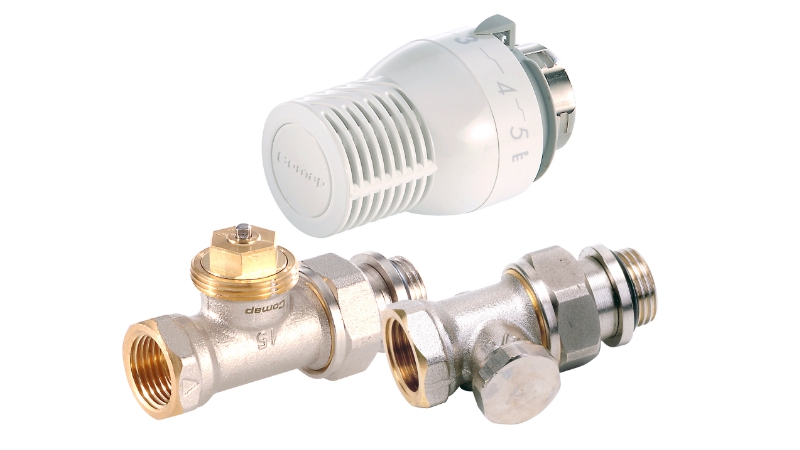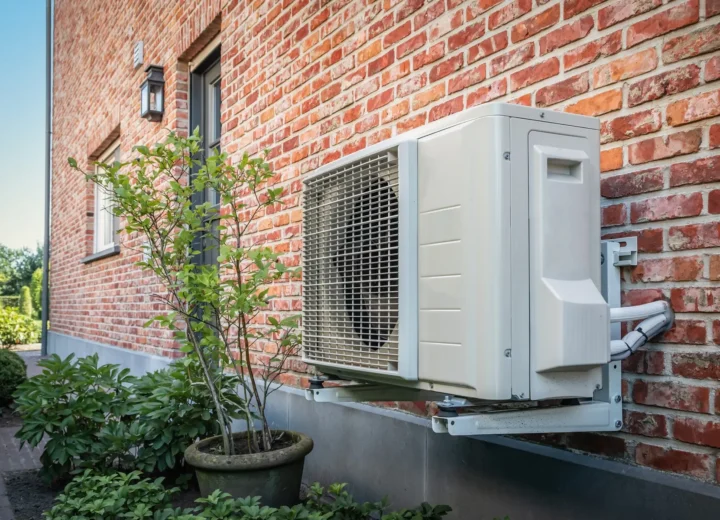Once you’ve installed thermostatic radiator valve heads, it is important to advise your customers on how to adjust their radiator thermostats. The aim is to provide them with real heating comfort and optimise their energy costs. What key advice should you give them? We give you all the details.
Thermostatic heads: basic criteria
The thermostatic heads usually have the following indicators: *, 1, 2, 3, 4, 5. The star corresponds to the “frost-free” position: when your customers go on holiday in winter, they should not switch off their boiler, but rather put the heads in this position to avoid the risk of pipes freezing. In summer, contrary to popular belief, it is recommended to set the thermostatic heads to 5 and not *. Indeed, if the head is set to *, as soon as the temperature exceeds 7°C, the needle will push on the radiator and the head will eventually seize up.
| ⚠️ Important ⚠️ When your customers go on holiday, it is vital that they do not switch off their boilers and/or radiators. Minimal heat must circulate so that the pipes do not explode. |
| Value indicated on the head | Corresponding temperature (in general) |
| * | 7°C |
| 1 | 11°C |
| 2 | 16°C |
| 3 | 19-21°C |
| 4 | 24°C |
| 5 | 28°C |
Possible settings of a thermostatic head
Recommended temperatures
Each room in a house has its own use (washing, sleeping, cooking, relaxing) and its own heating comfort… and therefore a different thermostatic head position.
| Room | Head position | Recommended temperature |
| Bedroom | 2 | 16°C |
| Living-room | 3 | 19-21°C |
| Bathroom (during use) | 4 | 24°C |
Blocking or limiting the thermostatic setpoint
There are solutions for blocking or limiting the setpoints of thermostatic heads using lugs. Aims: avoid manual adjustments that lead to excessive energy consumption. There are also solutions without lugs which avoid the risk of loss or small parts being swallowed by children.

To prevent a room from cooling down too much (e.g. for a damp room that needs to be around 16°C), simply set the index at position 2. Then pull the limit ring forward and place the lugs immediately before position 2 before pushing the ring back into its original position. The temperature can only be set above position 2.
To limit the room temperature (such as in hotels and schools), do the same by placing the pins of the limiting ring after position 3.
You can also lock the temperature at a fixed value by pulling the limiting ring and placing the lugs in front of the desired temperature.
Anti-theft solutions for your thermostatic heads
In premises open to the public (administrative buildings, doctors’ offices, offices, banks, hotels, etc.), it is possible to protect thermostatic heads from theft.
There are two solutions:
- Anti-theft nuts: they prevent the head from being removed, but allow free adjustment of the temperature;
- The tamper-evident ring: once installed, it provides an anti-theft function and prevents the thermostatic set point from being changed.
These nuts and tamper-evident rings are supplied with removable screws and a special key or cannot be removed.
Your customers can easily tamper with their thermostatic equipment in a way that goes against the recommendations for proper operation. Your explanations on how to adjust the thermostatic heads will ensure their comfort and peace of mind. And when it comes to ensuring the performance of the systems, there are many thermostatic solutions available.





